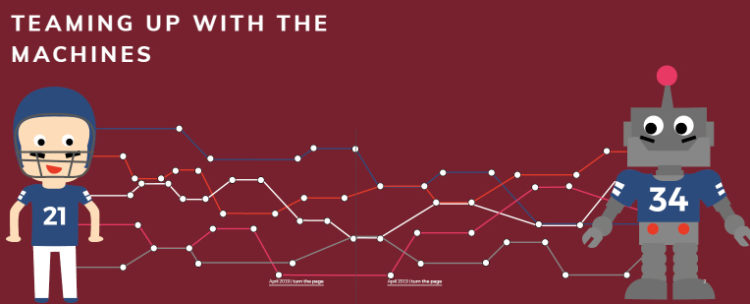TEAMING UP WITH THE MACHINES : Interview with Turn The Page
From cars and bicycles to streetlights and your home thermostat. It seems that more and more things are becoming ‘smart’.

With the continuous rise of the Internet of Things and Artificial Intelligence, almost all the things in our life are connected. Or will be soon. What does this mean? “It’s up to designers to make sense of these developments. Nobody really knows what will happen in the future, but it’s up to us to bring possible futures to the present. Make them tangible and understandable. So that we may know better what we need to do in order to make desired outcomes a reality.”
Iskander Smit, visiting professor and PhD candidate at Industrial Design Engineering in Delft, recently founded the Cities of Things Lab, together with Professor Elisa Giaccardi. This Delft Design Lab focusses on the role that
Things will play in our future cities. “We foresee a future where our cities can be places where autonomous objects work with
us to produce positive change
in everyday life.” The Cities of Things Lab is a continuation of
PACT (PArtnership in Cities of Things). “We look for novel methods and tools to understand and demonstrate how intelligent things can act in concert with people and connect to existing data and cloud services.”
This all may seem a bit overwhelming and farfetched to some, but Iskander emphasises that these possible futures have already started to arrive. “It’s a big field, and indeed very new. But think about a smart thermostat such as NEST for instance. Even though it has not achieved the level of sophistication as once touted,
it’s changing our behaviour in the most private parts of our lives: our homes.” You could also mention the cars of Tesla: electric powered drivable computers that gather data while in their Autopilot mode in order to keep improving self- driving capabilities, know the roads better and remember your driving preferences. At the moment, these objects or things are mainly capable of collecting data of use. They can register and perhaps visualise this data to us in order to perhaps influence our behaviour.
Iskander: “We see this as the first paradigm when designing for intelligent things: the city as a dashboard.” The next step would be an actual dialogue between human and object. Like an active nudge on the objects behalf aimed at the human. Maybe turn the heat down a bit if you want to keep your heating bill down as well? In a city with connected networks of these Things, you could speak of an intelligent infrastructure, which would be the second paradigm shift. Looking even further, Things could gain their own separate role in society, perhaps even be granted citizenship based on these roles. Autonomous moving objects, moving around and behaving as social entities in the city. A third paradigm shift. “We’re already seeing several companies experiment on the street with autonomous pods for delivery services. It’s fascinating to research what this means for human-things relationships.” In December 2018, The Washington Post reported
that students at Berkeley set up a candlelight vigil for a delivery robot that had ‘died’ when it caught fire on campus. While this might be an example of a nice student-joke, we know that humans can form bonds with products.
Delft Design Labs revolve around the cross-collaboration between researchers, organisations and students. The opportunities for students range from designing
a street cleaning bot of the
future to ethics and systems for interaction between humans and Things. “One of our graduation students Louise Hugen performed explorative research into design criteria for democratic models for human-thing societies. If Things can be citizens, what are their rights and their duties? What can
we expect from each other?” This system-context is reflected in the partner-organisations of Cities of Things: from the AMS Institute in Amsterdam and info.nl, to AiTech. Iskander: “I think you have to have a fascination for complexity and possibilities, to join our Delft Design Lab. In the future, the fields of mobility, household appliances and governance are the key areas we want to focus on.”
Speaking of bringing future visions closer to tangible reality, what would be an ultimate goal for the Cities of Things Lab? “I would love for use to develop a real-life field lab in a city, ”says Iskander, “where we can directly test new designs for systems, governance and Things.
